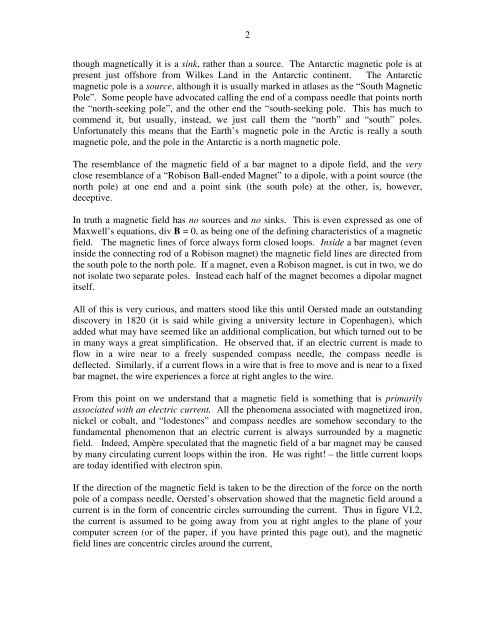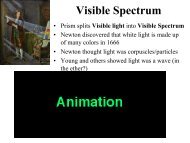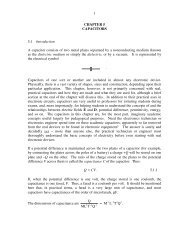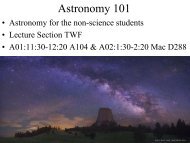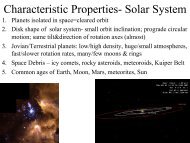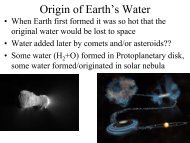1 CHAPTER 6 MAGNETIC EFFECT OF AN ELECTRIC CURRENT ...
1 CHAPTER 6 MAGNETIC EFFECT OF AN ELECTRIC CURRENT ...
1 CHAPTER 6 MAGNETIC EFFECT OF AN ELECTRIC CURRENT ...
- No tags were found...
Create successful ePaper yourself
Turn your PDF publications into a flip-book with our unique Google optimized e-Paper software.
2though magnetically it is a sink, rather than a source. The Antarctic magnetic pole is atpresent just offshore from Wilkes Land in the Antarctic continent. The Antarcticmagnetic pole is a source, although it is usually marked in atlases as the “South MagneticPole”. Some people have advocated calling the end of a compass needle that points norththe “north-seeking pole”, and the other end the “south-seeking pole. This has much tocommend it, but usually, instead, we just call them the “north” and “south” poles.Unfortunately this means that the Earth’s magnetic pole in the Arctic is really a southmagnetic pole, and the pole in the Antarctic is a north magnetic pole.The resemblance of the magnetic field of a bar magnet to a dipole field, and the veryclose resemblance of a “Robison Ball-ended Magnet” to a dipole, with a point source (thenorth pole) at one end and a point sink (the south pole) at the other, is, however,deceptive.In truth a magnetic field has no sources and no sinks. This is even expressed as one ofMaxwell’s equations, div B = 0, as being one of the defining characteristics of a magneticfield. The magnetic lines of force always form closed loops. Inside a bar magnet (eveninside the connecting rod of a Robison magnet) the magnetic field lines are directed fromthe south pole to the north pole. If a magnet, even a Robison magnet, is cut in two, we donot isolate two separate poles. Instead each half of the magnet becomes a dipolar magnetitself.All of this is very curious, and matters stood like this until Oersted made an outstandingdiscovery in 1820 (it is said while giving a university lecture in Copenhagen), whichadded what may have seemed like an additional complication, but which turned out to bein many ways a great simplification. He observed that, if an electric current is made toflow in a wire near to a freely suspended compass needle, the compass needle isdeflected. Similarly, if a current flows in a wire that is free to move and is near to a fixedbar magnet, the wire experiences a force at right angles to the wire.From this point on we understand that a magnetic field is something that is primarilyassociated with an electric current. All the phenomena associated with magnetized iron,nickel or cobalt, and “lodestones” and compass needles are somehow secondary to thefundamental phenomenon that an electric current is always surrounded by a magneticfield. Indeed, Ampère speculated that the magnetic field of a bar magnet may be causedby many circulating current loops within the iron. He was right! – the little current loopsare today identified with electron spin.If the direction of the magnetic field is taken to be the direction of the force on the northpole of a compass needle, Oersted’s observation showed that the magnetic field around acurrent is in the form of concentric circles surrounding the current. Thus in figure VI.2,the current is assumed to be going away from you at right angles to the plane of yourcomputer screen (or of the paper, if you have printed this page out), and the magneticfield lines are concentric circles around the current,


